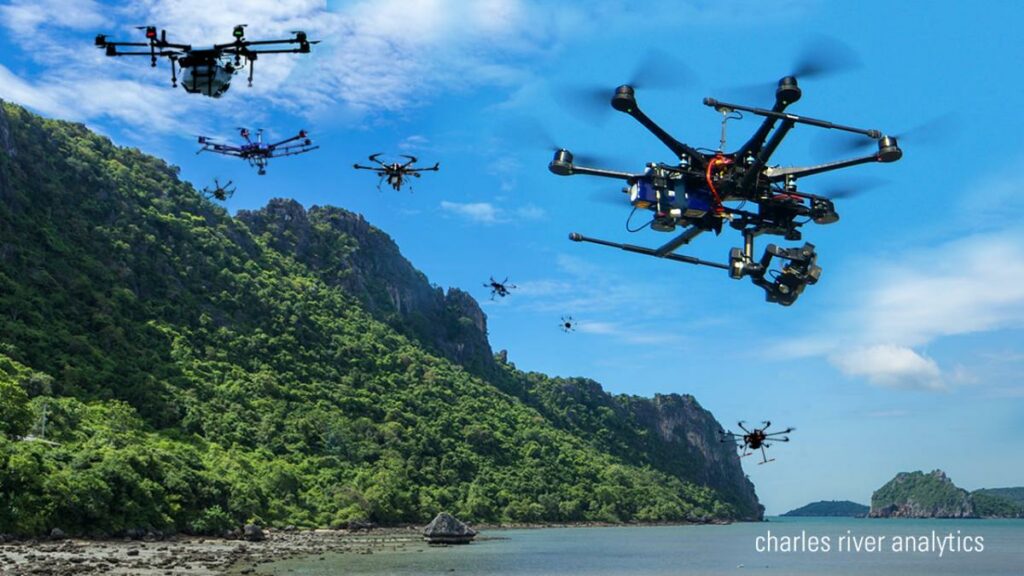SATURN
Swarm tactics to provide heterogeneous swarms of unlimited size with resilient swarm behavior in urban operations
Swarm Algorithms and Tactics for Urban Reconnaissance and Isolation (SATURN)
DARPA’s OFFensive Swarm-Enabled Tactics (OFFSET) program aims to make small-unit combat forces operating in urban environments more effective with highly autonomous swarm technologies.
Unmanned air and ground vehicles provide countless benefits in urban missions—drone swarms can help keep our Warfighters safer by performing risky missions, such as intelligence gathering, surveillance, and reconnaissance. A principal goal of OFFSET is to make it easier for Warfighters to develop and share swarm tactics in rapidly evolving urban settings, and free up Warfighters to perform other critical tasks.
Charles River is one of the “sprinter” teams that was selected to develop tactics for successful swarm deployment. We have created and tested our own novel swarm tactics within the OFFSET testbed environment, working closely with DARPA and the integrator teams to implement our collective ideas.
Part of DARPA’s OFFSET program, SATURN uses swarm tactics, primitives, and algorithms to provide heterogeneous swarms of unlimited size with resilient swarm behavior in urban operations.
Our OFFSET participation complements other techniques and applications Charles River has developed to support autonomous and unmanned systems, such as the MINOTAUR interface for controlling robotic leader-follower systems, the AMPT framework for supervising unmanned vehicles, and the CROWSNEST maritime traffic awareness solution for an unmanned surface vessel.
Contact us to learn more about OFFSET and our other robotics and autonomy capabilities.
This material is based upon work supported by the Defense Advanced Research Projects Agency (DARPA) under Contract No. HR0011-18-C-0077. Any opinions, findings and conclusions or recommendations expressed in this material are those of the authors and do not necessarily reflect the views of the Defense Advanced Research Projects Agency (DARPA).

